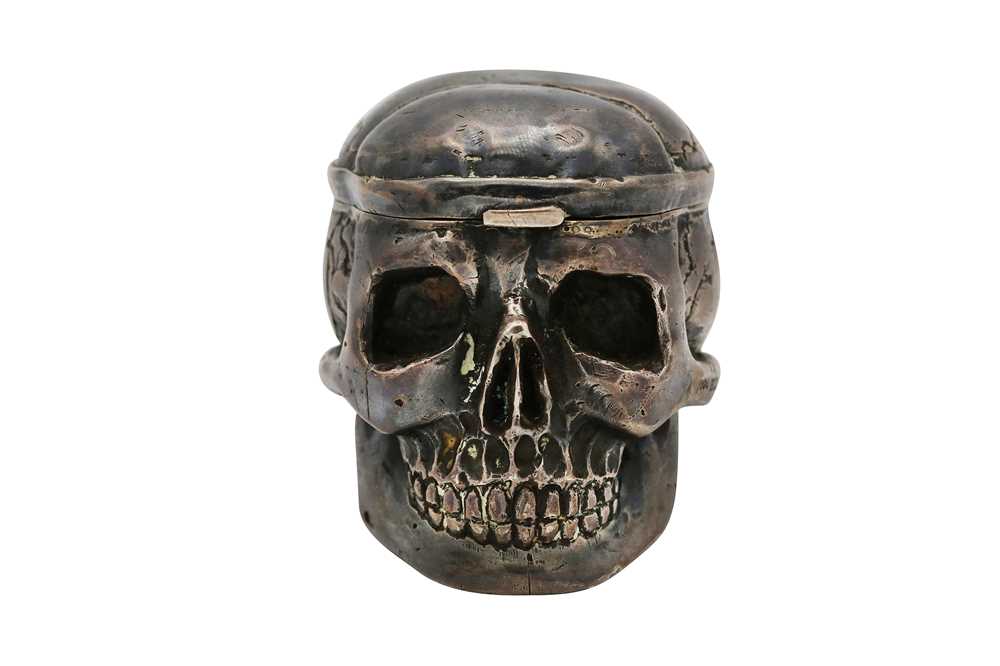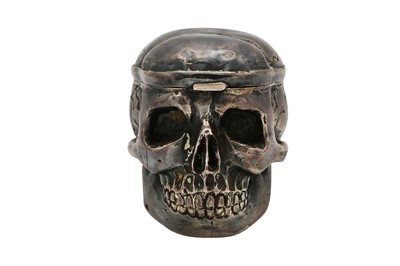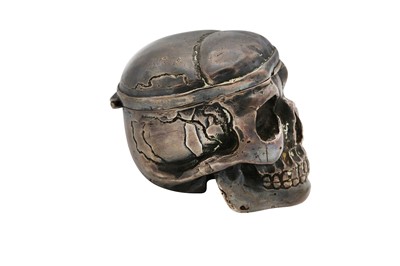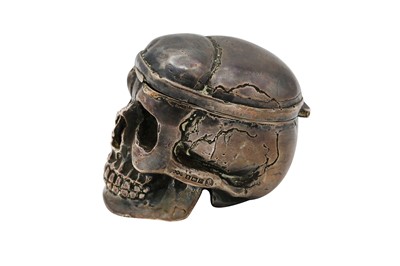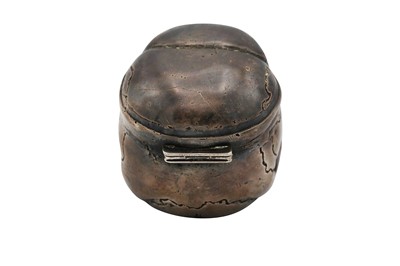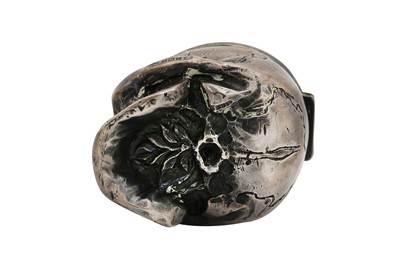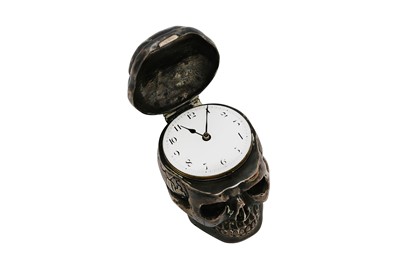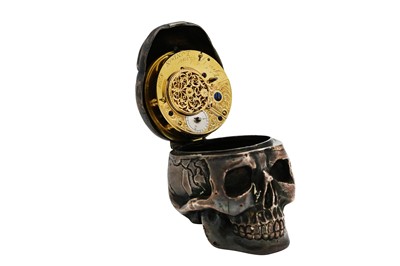9th Nov, 2021 12:00
Watches
MEMENTO MORI SKULL POCKET WATCH
GEORGE GRAHAM, RETAILED BY LIBERTY AND CO.
A solid silver Memento Mori skull pocket watch, George Graham, London, England, first half 18th century
The case: cast in solid silver Birmingham 1953 retailed by Liberty and Co, in the shape of a human skull, naturalistically rendered, with prominent cheekbones and full set of teeth, stamped to the right-hand side xxx, the top lid hinged at the back and opening vertically, 5cm x 5cm x 6cm.
Verge (Fusee) movement with a floral motifs over the balance, blued screws, No.8798, white porcelain dial with black Arabic numerals, black outer minute division and blued hands.
George Graham (1673 – 1751) was one of the most eminent English clockmakers in the early 18th century, as well as aninventor and geophysicist. Starting his career as the apprentice to Thomas Tompion, the Father of English Clockmaking, in 1688, Graham then joined the Clockmakers Company in 1695and became Master of the Worshipful Company of Clockmakers in 1722. He is credited with inventing several design improvements to the pendulum clock, and withinventing the mercury pendulum and the orrery. In his timepieces, Graham mostly used verge movements up until 1726 and then he swapped to cylinder. Graham died in 1751 and is buried alongside Tompion in Westminster Abbey.
Since the beginning of time, skulls have been featured in craftsmen’s creations and artworks as a constant reminder of our mortality and finite nature, the ultimate Memento Mori. This trope finds its roots in the philosophers of classical antiquity and Christianity, and from the Medieval period onwards, it becomes a Leitmotiv in Western funerary art and architecture. The motif remains particularly rooted in the visual arts throughout the Middle Ages and Renaissance, leading to creations like the Danse Macabre and the renowned genre of 16th and 17th-centuries paintings called vanitas, focusing on ephemerality, the transience of life, the futility of pleasure, and the certainty of death.
The Memento Mori motif was introduced in wearable accessories as a form of mourning jewellery as early as the 14th century, and it soon became a personal philosophical statement. Indeed, the constant reminder of death was not meant to be depressing, but rather encourage the wearer to treasure and cherish their life on earth more. From jewellery, the motif entered the world of timepieces; what better way to remind someone that their time is finite, if not a watch?
In the 19th and 20th centuries, memento mori pieces became highly collectable and sought-after: when earlier examples were not available, collectors specifically commissioned them and had them designed to fit the purpose. A brilliant example of this fashion can be appreciated in the collection of Pierre Bergé sold at Sotheby’s Paris on the 30th of October 2018 (please see lots 49 to 77, and especially lot 59, being a silver memento mori pocket watch).
We are thrilled to present three memento mori pocket watches in our November Watches sales, all dating to the 19th and 20thcenturies and fitted with important watchmakers’ movements, treasured by a private English collector and offered for the first time at auction.
Dimensions: 50.6mm by 61.8mm by 57mm.
Do you have an item similar to the item above? If so please click the link below to request a free online valuation through our website.
